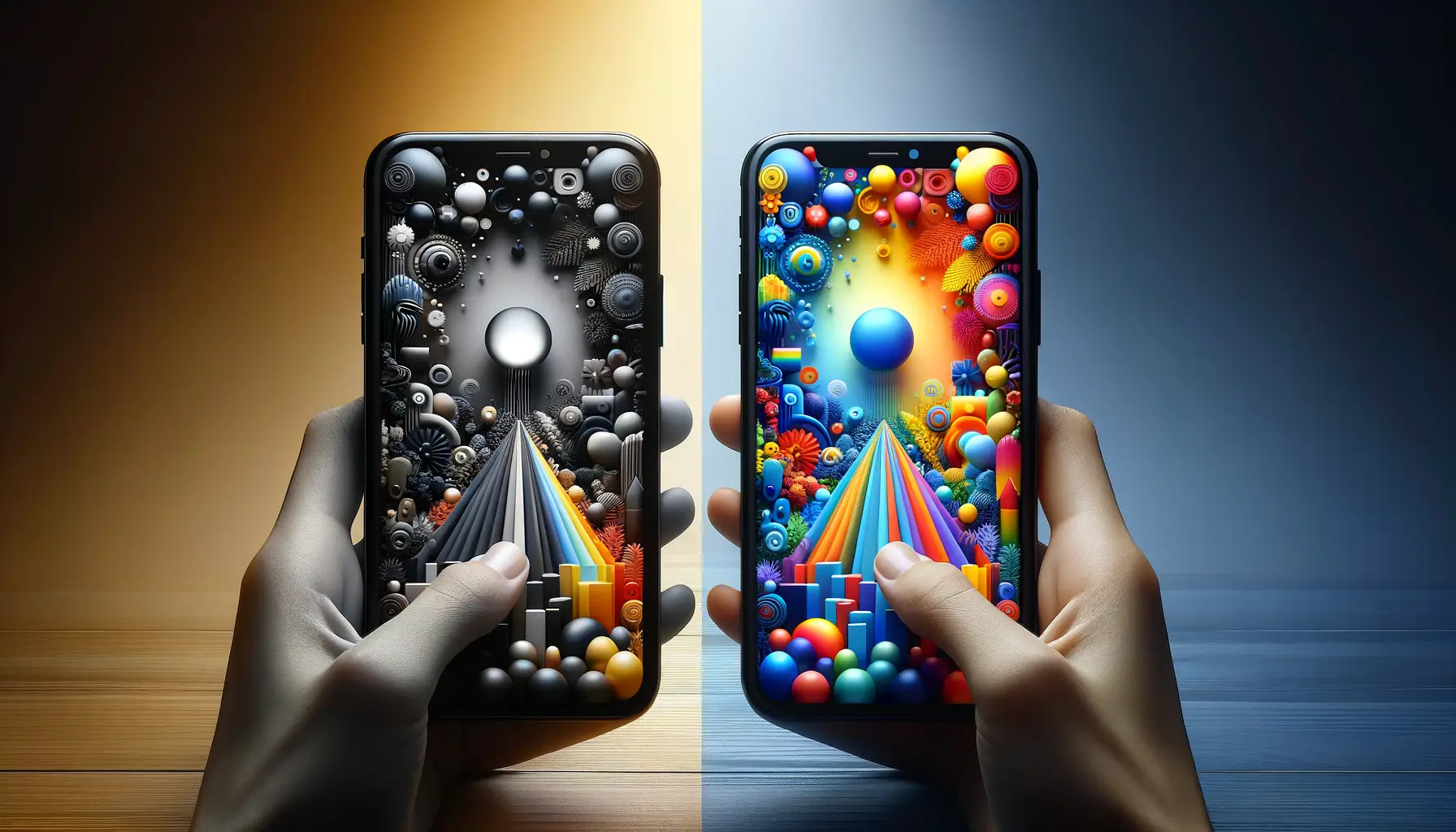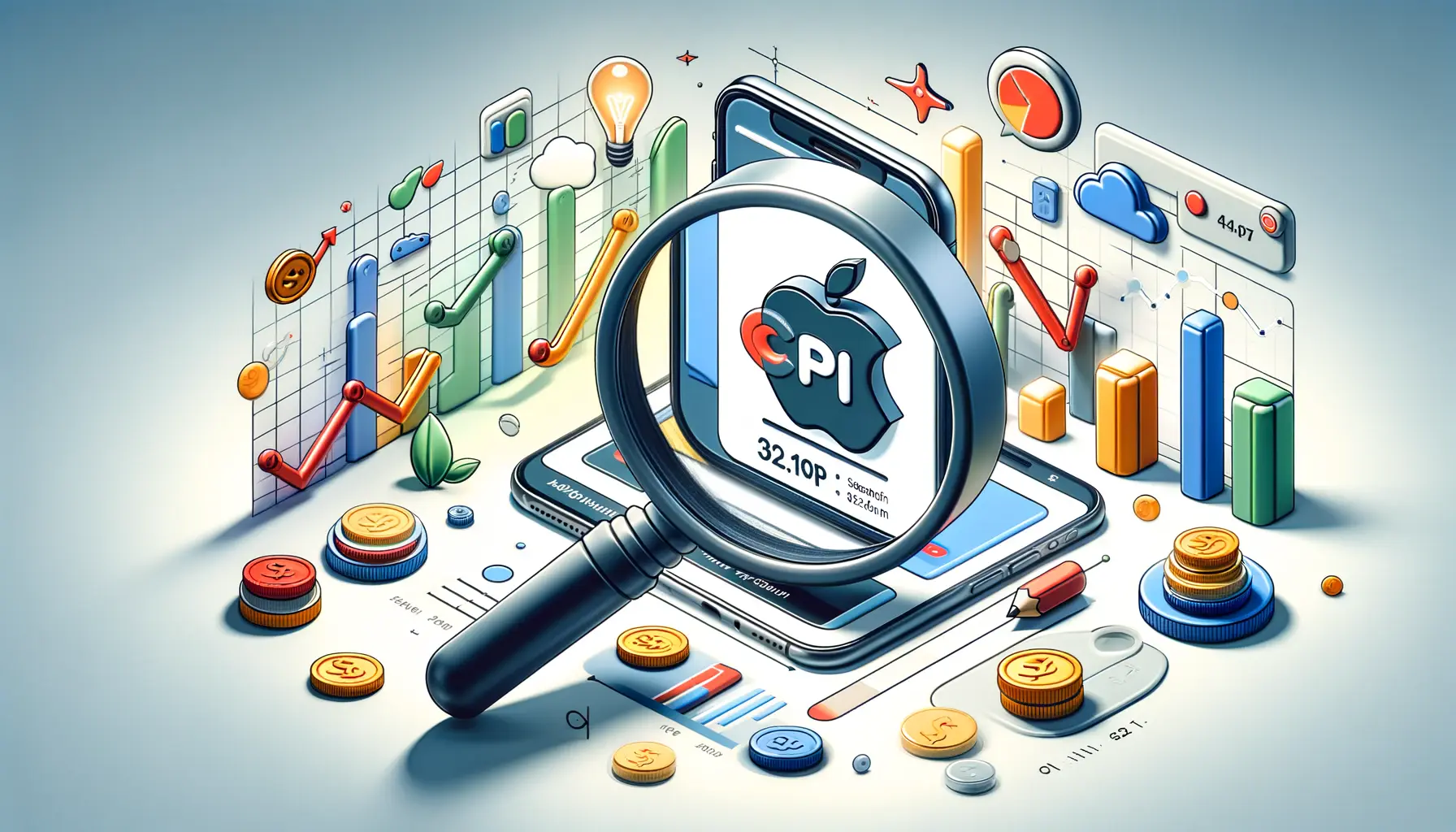The landscape of app optimization is ever-evolving, with the visual appeal of app icons playing a pivotal role in determining an app’s success.
In the competitive realm of app store optimization (ASO), understanding and leveraging icon trends is crucial.
Icons not only serve as the first point of contact with potential users but also significantly influence their decision to download an app.
This in-depth analysis explores the latest trends in app icon design, emphasizing their importance in an effective ASO strategy for the ASO App Icons category.
The visual elements of an app, especially its icon, are integral components of its marketing and branding strategy.
An app icon can convey the app’s essence, attract the target audience, and stand out in a crowded marketplace.
The significance of icon trends in ASO strategy cannot be understated, as they directly impact user engagement and conversion rates.
Through this exploration, we will unveil the nuances of icon design that can make or break an app’s visibility and attractiveness.
- The Role of App Icons in User Attraction
- Emerging Trends in App Icon Design
- Optimizing Icons for Different Platforms
- Incorporating Brand Identity into Icon Design
- Impact of Icon Changes on User Engagement
- Testing and Optimizing App Icons for ASO
- Utilizing Icon Trends in Niche Markets
- Maximizing ASO Through Strategic Icon Design
- FAQs on Icon Trends for ASO Strategy
The Role of App Icons in User Attraction
App icons are not merely decorative elements; they are strategic tools that can significantly influence a potential user’s perception and interest.
The right icon can effectively communicate an app’s purpose, functionality, or entertainment value at a glance.
This section delves into the psychological impact of visual elements on user attraction and the fundamental principles behind creating compelling app icons.
Understanding User Psychology
The color scheme, shape, and imagery of an app icon can trigger emotional responses and associations in users.
Colors, for instance, play a crucial role in conveying messages and evoking emotions.
Warm colors like red and orange can stimulate excitement and passion, while cool colors like blue and green are associated with calmness and trust.
The shape and simplicity of an icon also contribute to its recognizability, influencing the user’s decision to engage further.
Incorporating elements that resonate with the app’s target audience is essential.
A game app aimed at children might use bright colors and playful characters, whereas a productivity app for professionals might opt for cleaner, more minimalist designs.
This strategic alignment with user expectations can enhance an app’s appeal and increase its chances of being downloaded.
The choice of colors, shapes, and imagery in app icons can significantly impact user attraction and engagement.
Key Principles in Icon Design
Creating an effective app icon requires a balance between uniqueness and clarity.
An icon should be distinctive enough to stand out but simple enough to be instantly recognizable.
This involves avoiding overly complex designs that may not scale well or may lose detail when viewed on different devices.
A focus on core elements that reflect the app’s essence can make an icon memorable and effective.
Furthermore, considering the competitive environment of app stores, testing different icon designs through A/B testing is a valuable strategy.
This enables developers to gather data on which designs resonate most with users, allowing for informed decisions that can lead to higher conversion rates and better app store rankings.
Employing best practices in icon design can significantly enhance an app’s visibility and appeal, making it a critical aspect of ASO strategy.
Emerging Trends in App Icon Design
The digital landscape is continuously evolving, and with it, the trends in app icon design.
Staying abreast of these trends is essential for developers and marketers aiming to optimize their apps for better visibility and engagement.
This part examines the latest trends in app icon design, offering insights into how these trends can be leveraged to captivate and retain user interest.
Minimalism and Simplicity
The trend towards minimalism in app icon design emphasizes clean, uncluttered visuals that convey the app’s purpose at a glance.
Simple icons not only stand out against the busy backdrop of app stores but also ensure readability across various devices and screen sizes.
This approach focuses on the core visual elements—color, shape, and symbolism—to create a strong and recognizable brand identity.
- Color: Limited color palettes with bold and contrasting hues are preferred to draw attention and improve icon distinctness.
- Shape: Geometric shapes and simple iconography are used to convey the app’s function or category, making the icon instantly recognizable.
- Symbolism: Abstract or symbolic imagery is chosen over detailed illustrations to represent the app’s core features or benefits effectively.
Use of Negative Space
Negative space, or the empty space around and between the subject of an image, is increasingly utilized in app icon design to create intriguing and memorable visuals.
This technique not only adds a layer of sophistication to the design but also facilitates instant recognition.
Icons that cleverly use negative space can stand out in a crowded app store by offering a unique visual puzzle that draws the user’s attention.
- Contrast: High contrast between the icon’s background and the negative space helps in highlighting the intended shape or message.
- Memorability: Icons that incorporate negative space tend to be more memorable, as the brain engages more deeply to interpret the visual cues.
Incorporating negative space in app icons can create a distinctive and engaging visual identity that enhances user interest and recall.
Dynamic and Adaptive Icons
With the advent of adaptive icon technology in platforms like Android, designers now have the flexibility to create dynamic icons that can change appearance based on user interaction or system context.
This adaptability not only enriches the user experience but also allows icons to maintain visual integrity across different device themes and settings.
- Consistency: Adaptive icons ensure consistency in appearance across different devices, improving brand recognition.
- Engagement: Dynamic elements, such as animations or contextual changes, can make the app feel more interactive and engaging.
Staying updated with these trends in app icon design is crucial for developers looking to optimize their ASO strategy.
By embracing minimalism, utilizing negative space, and exploring dynamic icons, developers can create visually appealing icons that capture user interest and stand out in the competitive app marketplace.
Optimizing Icons for Different Platforms
Designing an app icon that resonates with users requires an understanding of the nuances across various platforms.
The App Store and Google Play Store, while serving the same fundamental purpose, have distinct design guidelines and user expectations.
This section explores strategies for optimizing app icons specifically tailored to the platform they’re intended for, ensuring they capture attention and drive downloads.
Adapting to Platform Guidelines
Both Apple and Google provide detailed guidelines for app icon design, focusing on dimensions, resolutions, and aesthetic recommendations.
Adhering to these guidelines is crucial not only for acceptance into their respective stores but also for ensuring that the icons look appealing on different devices.
- App Store: Icons should be simple, memorable, and convey the app’s essence. Apple emphasizes the use of vibrant colors and recommends avoiding transparency and text.
- Google Play Store: Icons can be more flexible in design, but they should still focus on clarity and recognizability. Google suggests adaptive icons for consistent display across devices.
Understanding User Expectations
User expectations vary significantly between iOS and Android platforms, influenced by the ecosystem’s design language and user interface conventions.
Recognizing these expectations can guide the icon design process to better appeal to the target audience.
- iOS users often expect a sleek, minimalist design that aligns with Apple’s overall aesthetic.
- Android users might be more accustomed to diverse icon shapes and styles, given the platform’s openness and variability.
A successful app icon design addresses both platform guidelines and user expectations, ensuring a blend of creativity and conformity.
Leveraging Platform-Specific Features
Each platform offers unique features that can be leveraged in icon design to enhance visibility and user engagement.
For instance, the ability to update icons dynamically on Android can be used to highlight promotions, seasonal events, or updates, keeping the app feeling fresh and relevant.
- Seasonal Updates: Changing the icon based on upcoming holidays or seasons can increase engagement by making the app feel timely and dynamic.
- Feature Highlights: Updating the icon to reflect new features or content can encourage users to revisit the app.
Optimizing app icons for different platforms involves a delicate balance of following guidelines, understanding user expectations, and taking advantage of platform-specific features.
By adopting a strategic approach to icon design, developers can ensure their apps stand out, regardless of the store or device they’re viewed on.
Incorporating Brand Identity into Icon Design
App icons are not just about visual appeal; they are a critical part of an app’s brand identity.
A well-designed icon should encapsulate the essence of the brand, conveying its values, tone, and personality at a glance.
This part of the article discusses the importance of integrating brand identity into icon design and offers strategies to achieve a cohesive brand image across all user touchpoints.
Reflecting Brand Values
The app icon is often the first interaction a user has with your brand, making it essential to leave a lasting impression that accurately reflects your brand values.
Whether your brand stands for innovation, reliability, fun, or luxury, the icon should convey these qualities through its design elements.
Color choices, icon shapes, and imagery can all play a role in communicating your brand’s core values and differentiating it from competitors.
- Color Psychology: Utilize colors that align with your brand’s values and emotional appeal. For instance, blue can convey trust and dependability, while green is often associated with growth and health.
- Icon Imagery: Choose imagery that resonates with your brand’s messaging and audience. A playful character might be appropriate for a gaming app, while a sleek, minimalist icon might suit a productivity tool.
Ensuring Consistency Across Platforms
Maintaining a consistent brand identity across various platforms is crucial for brand recognition.
While platform-specific optimizations are important, the core elements of your icon should remain consistent to ensure users can easily recognize your brand, whether they encounter it on the App Store, Google Play Store, or elsewhere.
This consistency extends to all branding materials, including app screenshots, promotional materials, and social media channels.
- Cross-Platform Recognition: Ensure that your app icon maintains key visual elements across different platforms, helping users to recognize your app instantly.
- Brand Consistency: Align your app icon design with other brand assets for a cohesive look and feel that reinforces your brand identity.
A strong brand identity, reflected in your app icon, can significantly enhance user trust and loyalty, driving long-term success.
Branding and ASO
While focusing on brand identity, it’s also important to consider how your app icon fits into your overall ASO strategy.
A branded icon that stands out and communicates your app’s value proposition can improve visibility and attract more organic downloads.
Regularly updating your icon based on user feedback and market trends can also keep your app relevant and appealing to your target audience.
- User Feedback: Listen to user feedback about your icon’s appeal and usability to make informed adjustments that resonate with your audience.
- Market Trends: Stay updated with industry trends to ensure your app icon remains competitive and appealing to new users.
Incorporating brand identity into your app icon design is a strategic move that can differentiate your app in a crowded marketplace.
By reflecting your brand’s values, ensuring consistency across platforms, and aligning with your ASO strategy, you can create a powerful visual identity that attracts and retains users.
Impact of Icon Changes on User Engagement
The decision to update an app’s icon is not one to be taken lightly.
Changes to an app’s icon can have far-reaching implications on user engagement and perception.
This section explores the potential impacts of modifying your app’s icon, including the positive effects on user interest and retention, as well as considerations to keep in mind to avoid negative repercussions.
Boosting App Discovery and Downloads
An updated app icon can significantly enhance visibility in app stores, attracting new users by standing out among competitors.
A fresh design or an icon that reflects current trends can pique user curiosity, leading to increased downloads.
For existing users, an icon refresh can rekindle interest in the app, prompting them to engage more frequently or explore new features they may have missed.
- Visibility: A new icon can differentiate your app from others, making it more noticeable to potential users browsing the app store.
- Relevance: Updating your icon to reflect seasonal events or popular trends can make your app appear more current and appealing.
Enhancing User Retention
For long-term users, changes to the app icon can signal ongoing development and improvement, reinforcing their decision to keep the app installed.
An updated icon can convey a sense of freshness and innovation, suggesting that the app is continuously evolving to meet user needs and preferences.
This can encourage users to remain engaged and loyal, reducing churn rates.
- Perception of Innovation: An icon update can give the impression that the app is keeping pace with technological advances and user expectations.
- User Engagement: A refreshed icon can motivate users to revisit the app, potentially increasing usage rates and engagement metrics.
Assuming that all icon updates will be positively received by users is a common mistake. User feedback and testing are essential to gauge the potential impact of any changes.
Navigating Potential Pitfalls
While updating an app’s icon can have many benefits, it’s also important to consider potential drawbacks.
A drastic change may confuse or alienate existing users, especially if the new design strays too far from the original or fails to communicate the app’s purpose effectively.
To mitigate these risks, it’s advisable to conduct A/B testing, gather user feedback, and roll out changes gradually to ensure a positive reception.
- User Feedback: Engage with your user base to understand their preferences and concerns regarding icon changes.
- A/B Testing: Test different icon designs with a segment of your audience to evaluate their impact on engagement and downloads before a full rollout.
Effectively managing icon updates is a strategic process that requires careful consideration of user engagement, brand identity, and market trends.
By approaching icon changes thoughtfully and proactively, developers can enhance their app’s appeal and foster a deeper connection with their audience.
Testing and Optimizing App Icons for ASO
Testing and optimizing app icons is a critical step in the ASO process, directly influencing an app’s visibility, download rates, and overall success in the app stores.
This section outlines the methodologies for conducting effective app icon tests and how to optimize icons based on the insights gained, ensuring your app stands out in the competitive app marketplace.
Implementing A/B Testing for Icons
A/B testing, or split testing, is a powerful tool for comparing two versions of an app icon to determine which one performs better in terms of user engagement and conversions.
By presenting two variants to similar audiences under the same conditions, developers can gather data-driven insights into user preferences and the elements that make an icon more effective.
- Test Design: Carefully design your test to isolate the variable being tested (the app icon) while keeping other factors constant.
- Data Analysis: Use the results to analyze how each icon variant influences key metrics such as click-through rates, downloads, and engagement.
Optimization Based on User Feedback
User feedback is invaluable in the optimization process, providing direct insights into how real users perceive your app icon.
Encouraging users to share their thoughts through surveys, social media, or app store reviews can offer perspectives that might not be apparent through quantitative analysis alone.
- Feedback Collection: Implement mechanisms to collect user feedback specifically about the app icon.
- Iterative Design: Use this feedback to iterate on the icon design, aiming to align more closely with user expectations and preferences.
A/B testing combined with user feedback creates a robust framework for optimizing app icons, ensuring they resonate with your target audience and contribute to your app’s ASO success.
Continuous Optimization and Updates
The app marketplace is dynamic, with user preferences and design trends constantly evolving.
Therefore, optimizing an app icon is not a one-time task but an ongoing process.
Regularly reviewing performance metrics, staying abreast of design trends, and being willing to update your app icon can keep your app relevant and appealing to new and existing users alike.
- Market Trends: Keep an eye on emerging design trends and competitor updates to ensure your app icon remains competitive.
- Performance Review: Continually monitor your app’s performance metrics to identify opportunities for further optimization.
By embracing a cycle of testing, feedback, and optimization, developers can refine their app icons to maximize visibility and appeal in the app stores.
This proactive approach to icon design and ASO strategy can significantly impact an app’s success, driving higher download rates and fostering user engagement.
Utilizing Icon Trends in Niche Markets
App icons in niche markets require a specialized approach to design and optimization.
These markets often have unique user expectations and design conventions, making it crucial for developers to tailor their app icons to resonate with their specific audience.
This part delves into strategies for leveraging icon trends effectively in niche markets, ensuring your app not only appeals to its target demographic but also stands out in a crowded field.
Identifying Niche Market Trends
The first step in leveraging icon trends for niche markets is thorough research to understand the visual preferences and trends prevalent in your market segment.
This might involve analyzing competitor icons, understanding the cultural and aesthetic values of your target audience, and staying updated with any shifts in design trends specific to your niche.
- Competitor Analysis: Review the app icons of top-performing apps in your niche to identify common design elements and themes.
- Audience Preferences: Gather insights into your target users’ preferences through surveys, focus groups, or social media engagement.
Customizing Icons to Fit the Niche
With a deep understanding of your niche market trends and user preferences, customize your app icon to reflect these insights.
This could mean adopting certain color schemes, iconography, or stylistic elements that are known to appeal to your target audience.
The goal is to create an icon that not only adheres to broader design trends but also speaks directly to the unique tastes and preferences of your niche market.
- Visual Elements: Incorporate visual elements that resonate with your niche audience, whether it’s specific colors, shapes, or imagery.
- Brand Alignment: Ensure that the icon reflects your brand identity while also appealing to niche market aesthetics.
Tailoring your app icon to fit niche market trends can significantly enhance your app’s appeal and foster a stronger connection with your target audience.
Monitoring and Adapting to Changes
Niche markets can be particularly dynamic, with trends and user preferences evolving rapidly.
Continuously monitoring these changes and being ready to adapt your app icon accordingly is crucial for maintaining relevance and engagement.
Regular updates informed by ongoing market research and user feedback can help your app stay ahead of the curve.
- Market Research: Keep a pulse on your niche market to quickly identify any emerging trends or shifts in user preferences.
- User Feedback: Actively seek and incorporate user feedback to ensure your app icon remains aligned with your audience’s expectations.
By effectively utilizing icon trends in niche markets, developers can create app icons that not only capture the essence of their app but also deeply resonate with their intended audience.
This specialized approach to icon design and optimization is key to standing out in niche markets, attracting and retaining a dedicated user base.
Maximizing ASO Through Strategic Icon Design
In the digital age, where the visual elements of an app can significantly influence its success, understanding and leveraging icon trends in ASO strategy emerges as a critical endeavor.
Throughout this article, we have explored the multifaceted role of app icons, from enhancing user engagement to embodying brand identity, each aspect underscoring the importance of strategic icon design in the competitive app marketplace.
Key Takeaways for ASO Success
Through our exploration, several key themes have emerged, offering actionable insights for developers and marketers aiming to optimize their apps:
- Emphasizing simplicity and clarity in icon design can significantly improve user attraction and app recognizability.
- Adapting icon designs to meet platform-specific guidelines and user expectations is crucial for cross-platform consistency and appeal.
- Incorporating brand identity into icons not only enhances brand recognition but also fosters user trust and loyalty.
- Regular testing and optimization, informed by user feedback and market trends, are essential for maintaining an icon’s relevance and effectiveness.
- Customizing icons to resonate with niche markets can lead to deeper user engagement and a stronger presence within specific segments.
Navigating the Future of ASO with Icon Trends
The dynamic nature of the app marketplace demands continuous innovation and adaptability, especially in the realm of app icon design.
As we look to the future, staying abreast of emerging icon trends and incorporating these insights into your ASO strategy will be paramount.
The journey to optimizing your app’s icon is iterative, involving constant experimentation, feedback, and refinement to capture the essence of your app and appeal to your target audience.
Ultimately, the goal is to craft an icon that not only stands out in a crowded marketplace but also forms an integral part of a comprehensive ASO strategy.
By doing so, developers can ensure their apps not only attract but also retain user interest, driving downloads and fostering long-term success.
In the ever-evolving landscape of app development and marketing, strategic icon design remains a potent tool in the quest to maximize app visibility and user engagement.
Boost your mobile app's success with our guaranteed App Store Optimization (ASO) service. Leave it to the experts!
FAQs on Icon Trends for ASO Strategy
Delve into frequently asked questions about leveraging icon trends to enhance your ASO strategy, providing insights to optimize app visibility and user engagement.
App icons play a pivotal role in ASO by making the first visual impression on potential users, influencing their decision to explore or download an app.
Regular updates, aligned with major app updates or market trends, can keep your app relevant and maintain user interest.
An effective app icon is clear, recognizable, and reflective of the app’s purpose, utilizing colors and symbols that appeal to its target audience.
A/B testing different icon designs with a segment of your audience helps identify which version drives better engagement and downloads.
Yes, updating your app icon based on user feedback and current trends can significantly improve visibility and attract more downloads.
While maintaining brand consistency is important, optimizing your app icon to fit the design guidelines of each platform can enhance user appeal.
Color influences user emotions and perceptions, making it a critical factor in icon design to attract attention and convey the app’s mood or function.
Minimalism in app icon design focuses on simplicity and clarity, helping users quickly recognize and remember the app amidst a crowded marketplace.






